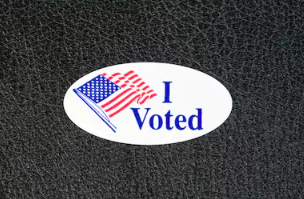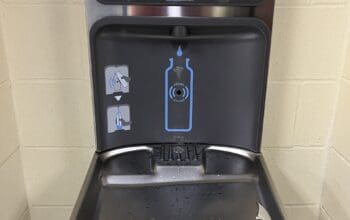Nathan Bourgeois
Class of 2019
Editor’s note: Polling numbers quoted in this article reflect data from Friday, November 2nd, unless otherwise noted.
If you’ve been keeping up with recent events, you’d know that the 2018 midterm elections are going to be held Tuesday, November 6th. One third of the US Senate is up for grabs and all 435 house seats as well. This is an important election which will shape the legislative and gubernatorial future for the second half of President Donald Trump’s first term.
Throughout history, the President’s party generally has heavy losses in the midterm elections due to a charged-up voter base for the opposing party. But recent events such like Brett Kavanaugh’s confirmation have stoked the Republican base, meaning there may be political dams built halt to a democratic blue wave.
What are the numbers? According to a recent NBC/WSJ poll aired on NBC news, they have gauged the relative enthusiasm of voters. In the midterm years of ‘06, ‘10, ‘14, the gap between Republicans and Democrats in excitement was respectively between 10-20% towards the winning side of that election. However, this midterm election shows a gap of just 4%.
While 72% of Democrats are excited about the midterms, 68% of Republicans are. What’s more interesting is the Republicans have been closing the gap since August, shrinking the Democrats’ 11% lead down to 4%. At these low rates, the midterms are looking to be very competitive between the parties.
But the overall generic ballot isn’t what wins elections, it’s the individual races in the House and the Senate, which really decide the future of the Nation.
To break this section down, I will use the website FiveThirtyEight founded by American Statistician Nate Silver who called 49/50 states in 2008 for the presidential elections and 50/50 states in 2012 for the presidential elections. He also, however, was incorrect about the 2016 presidential elections and is looking to be cautious in his approach. More on this later. I will also be using the RealClearPolitics aggregate, which is a reliable indicator of how races are shaping up.
The House race, according to FiveThirtyEight Deluxe, as of October 31st, show that the Democrats have an average gain of 35 House seats and a 5-in-6 chance of taking the House. Note that these numbers are constantly being updated, so when you check, it may differ.
When this is boiled down into election likelihood, the RealClearPolitics average shows that there are 205 Safe or Likely states for Democrats, about 200 Safe or Likely states for the Republicans, and 30 tossups, which could go any direction.
The Senate race according to FiveThirtyEight Deluxe shows that the Republicans are poised to keep the Senate with a 6-in-7 chance of keeping the house and are most likely to gain anywhere from 1 to 3 seats.
As for the Ohio Governor’s election, the Republicans may end up holding a slim majority as RealClearPolitics shows 26 Republicans to 24 Democrats as governors.
But remember how I said Nate Silver was hesitant? He said recently to Vox in verbatim that there was a 35%-40% chance that their polls and predictions are wrong, and that the turnout smashes records, resulting in one party taking both House and Senate. And to his credit, recent Early Voting data from CNN has shown a massive turnout of the elderly and women voters. Other numbers from CNN show voter turnout is incredible, with Montana crushing records for voter turnout, increasing by 1100% since the ‘14 midterms.
It’s also important to show who they’re voting for, with NBC reporting that almost every key Senate race has a modest GOP lead in turnout. If Nate Silver’s off chance prediction is correct, it would most likely be the Republicans which would surprise everyone with a strong red rebellion against a blue wave.
So when the day does arrive, what should we do to know what party will be successful? The answer is, of course, to wait and find out. The length of your wait time may vary.
According to NBC data from the same poll above, Steve Kornacki, an NBC affiliated analyst, explains that the midterms generally break in two ways: early or late, with early breaks usually ending in quick landslides, or late breaks a subtle bump in the wee morning towards a long trending wave.
You’ll probably be able to tell with the first few contested districts the direction of the night (not that news stations would mind you staying up until 4 a.m. in the morning to give them view time, and more importantly ad time).
The 2018 midterms are going to result in a close House race, which Democrats are expected to win, and a close Senate race, which Republicans are expected to win (a split legislature), and a close Gubernatorial race in which Republicans are expected to slightly eke out a victory.
However, there is a 40% chance (go flip a coin if you’d like) that turnout is going to be shattered, polls don’t matter, and that one party takes both House and Senate. If that’s the case, either Democrats or Republicans may end up with one heck of a story to brag about the next day.
More stories on eSomethin:
[posts template=”templates/list-loop.php” posts_per_page=”6″ tax_term=”34″ order=”desc” orderby=”modified”]





